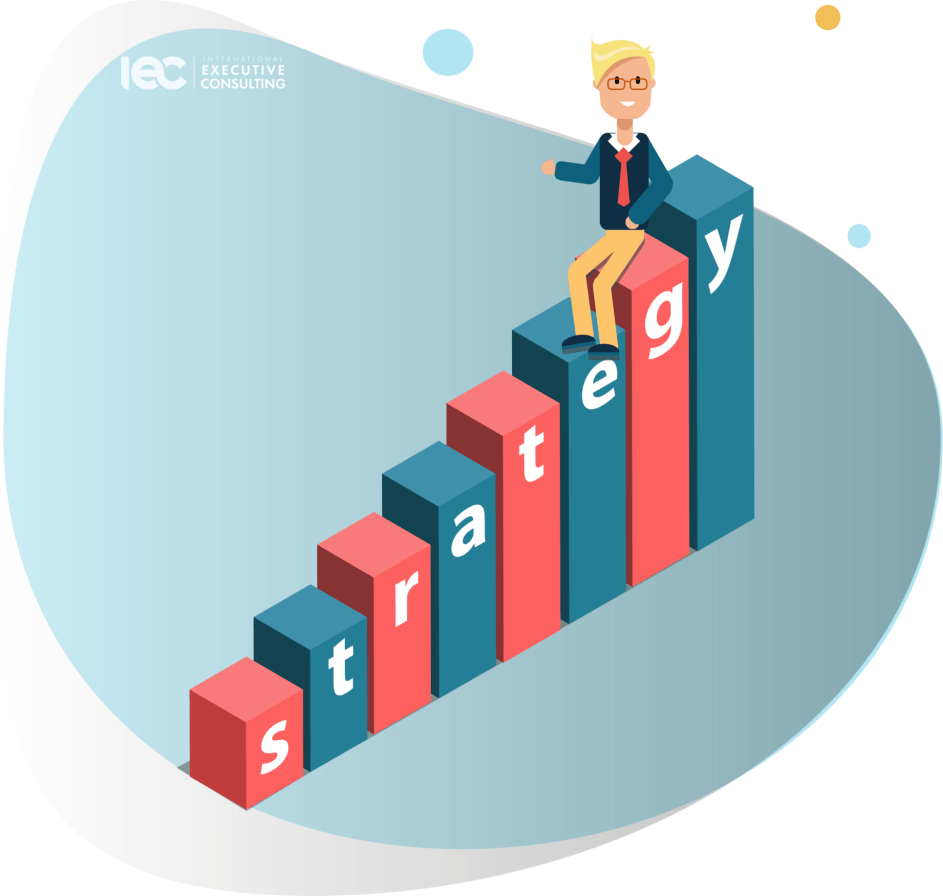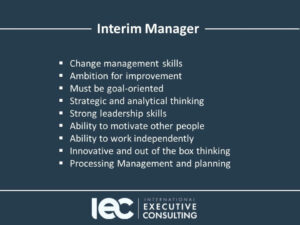Do you know how the world’s top businesses succeed? The answer lies deep within their development strategies. Each employ successful business development strategies that fit with its business goal and ethics. It also complies with their workforce and complies with government rules and regulations.
When each factor is fully in place, a growth strategy can benefit any business. There are many such professional development strategies available and at your disposal. Below is a list of 4 growth strategies you should use for your business:
Often businesses deal successfully with their products in a specific market. To use a market expansion development strategy, a business can tap into previously unexplored markets where they can sell their existing products.
It is not necessary to be domestic in these markets. A business can also tap into international markets. Finding new customers helps a business improve its sales and profits, thereby increasing brand authority.

Market penetration allows you to plan how your business can grow with competitors selling similar products in the current market. It is the lowest risk strategy compared to others.
Here, you will fight to steal as much market share as possible. But this strategy requires a lot of work and will include pricing, product positioning and marketing. There is a way you can understand how many products you are selling compared to the total estimated market for that product.
Market penetration rate = (“Number of customers” should be divided by “Size of target market”) * 100
What do your customers want? Is your product adding value to your customer’s life? These are questions that you will have to answer. Listen to your customers and their needs. If your product is partially fulfilling customer’s needs, you can improve it. If not, you can create a new product with a higher price for your customers because they are willing to pay for it.
For a business to be successful in using this strategy, adequate research, understanding of the customer wants, and requirements are critical.

Also considered as the most risky growth strategy in the matrix, growth can occur through diversification when a business enters a new market with a new product. You can reduce risk by related diversification.
For Example: A car company may start working on stereo systems for vehicles or a leather shoe manufacturer may start selling leather purses in a new market.
Another method of diversification is to sell a new product that has no synergy with your business. The plus point here is that if successful, it will open a new revenue stream for the business.
These are some of the best growth strategies that are important to a business. They help to survive, improve market share + customer base, gain profits and do so consistently.
Need help executing these strategies for your business? With over 20 years of experience in Interim Management, Growth & Expansion, Cost Reduction, International Executive Consulting LLC is an Interim C-Level Management & Business Growth Consulting Firms in the United States with a variety of industries. Get in touch with us!
Do you consider interim management to be a necessary evil mandated by unplanned circumstances? If so, this is clearly a necessary evil with the required ROI. In particular, it is not usually found in your company’s business plan. When you are dreaming of the next gear, you do not expect long for the opportunity to intend to take over your business or investment. Rather, it is what you do when there is a skills gap in your core team, the sudden departure of a chief executive, an otherwise competent sitting executive who lacks all the necessary skills needed to execute a modified or expanded element of your strategic plan. Happen, a business obstacle stands in the way of achieving a performance KPI or price advantage, or a critical life cycle pivot in your company that a project CXO requires.

Value Extends Well Beyond Cost Considerations:
With the stage set for this construct of necessity for Interim Services, it’s worth highlighting that the total price tag for interim management is less costly than buyers of the services might first believe. In fact, the all-in costs can be measurably lower than a full-time executive – given the incremental expenses of bonuses, stock incentives, options, and perks – none of which are typically required for Interim Professionals. The additional expenses of a full-time employee also include what are sometimes underestimated costs, such as executive-level healthcare benefits, car reimbursements and payroll burden (i.e. state, federal and social security taxes). With all that said, the services rendered and their related charges are circumstantial, and the actual cost comparison is heavily dependent on many factors, including company size, industry, employer profitability and the unique circumstances of the scenario in question. In contrast, the all-in costs of an interim manager, inclusive of travel and ancillary expenses is an estimated minimum of 20% less costly than that of a long-term hire.
Positive Outcomes of Hiring a Temporary Senior Professional:
All of these broad categories have a dramatic impact on the bottom line for the company.
The Truth of The Matter:
This is not to say that there aren’t other solutions that can be considered for resolving gaps in the senior ranks and with a lower outlay of capital. Although a “do nothing” approach is reminiscent of the “hope is not a strategy” cliché, sometimes companies can leverage existing team members for project work due to a vacated spot, promote from within on an interim basis or split duties among current executives. However, this approach should be weighed carefully.
Interim Management is not always the right solution, but given its impressive and longstanding track record of return on investment and the ability to validate its value with results in the form of completed project work, departmental efficiency, firm KPI’s and the direct cost comparison as outlined above, its utility as a key tool in the toolkit for owners, boards and investors is likely to be heavily (and happily) leveraged for many years to come.
For regular updates, follow us on Social Media.

* Security and Affiliation! *
As the name suggests, an interim manager is a temporary manager. Ideally, this is a matter of mutual understanding. It is therefore clear to both parties that this is a common path, for a common goal, for a limited time period. In this case, advantages of an interim manager can be fully exploited. At that moment the Interim Manager is only committed to success and is not hindered by securing the “job”. They can therefore concentrate completely on the matter at hand, on the essentials. The question of what needs to be done is never about: how do my decisions and actions influence my future in the company? Admittedly, it contradicts the understanding that generally prevails, namely the striving for security and belonging. However, it is only possible to escape this striving if the interim manager’s (self-) confidence in his or her own abilities and possibilities is high enough. It requires the willingness to constantly analyze the market in order to identify economic and market trends, as well as to adjust to the resulting requirements and adapt flexibly.
On the way to independence I often encountered the lack of understanding for the decision and the supposed uncertainty connected with it. Certainly, this way is also not the right for everyone. Only those who are willing to accept it, will have the chance to take advantage of the opportunities. A permanent position and self-employment are two completely different concepts, which are only partially compatible with each other and are therefore usually largely mutually exclusive.
*Opportunities Through the Interim Manager!*
This is one of the opportunities offered by the independence of an Interim Manager. The actions are geared to the task as well as the goal and keep the focus on the essentials without having to worry about “company politics”.
This is exactly where I see one of the reasons, why many things do not work out the way they should. Most of the people involved are often aware of the necessary actions or changes, but out of self-protection and fear of reprisals or not being part of it anymore, they are not addressed or implemented. Only a few dare to come out of their “cover”. If they do, however, they have to expect considerable difficulties with colleagues and superiors.
In practice, this now means that an Interim Manager should always be called in when changes are desired that require unpopular decisions or even the loss of the actual function or unit. The client does not incur any obligations and costs through the use of an Interim Manager as a result of lengthy separation procedures as with a permanent employee, as there are practically no notice periods and even less so no protection against dismissal. The company can hire specialist and management knowledge as required on a temporary basis. This is also one of the advantages of the interim manager, who after a mandate usually has a more or less long period of time off work, which must be used for further training and the continuous improvement of his/her services.
* Not Possible for One Employee! *
In addition to bridging a vacancy, Interim Management is about the concrete implementation of a goal or goals that are useful and important for the company, committing to one another in the long term. In comparison to consulting, it is about the actual implementation of projects with corresponding added values, rather than simply pointing out potentials. To realize profound changes often requires a high effort, which theoretically can also be done by the employees. However, since this cannot be sustained by them in the long run and thus cannot be achieved, they are forced to adjust their workload until it is sustainable for them over a longer period of many years.
So, who is Interim Management for? Actually, for every company that has temporary tasks or objectives that cannot be realized to the desired extent by internal employees for various reasons.
In these fast-moving times with their rapidly increasing changes, interim management can help companies to meet the constantly demanding challenges and to push ahead with their innovations. Ultimately, as a strategic building block for securing competitiveness.
* Success Through Limited Duration of Employment! *
This is the success that assigns the task to the Interim Manager and not the contract with the company. This results in an interesting opportunity for the company and the interim manager to work together with a variety of advantages and high benefits.
To get the complete details, please visit International Executive Consulting LLC or follow us on social Media (LinkedIn & Twitter).
Many private equity funds hear the term “Interim Executive” and think that the only application is turnaround or short-term maintenance. But for PE funds looking for great returns, they look interim for their unique abilities to create and transform companies.
Here are five major use cases for interim executives in PE-owned portfolio companies:
Interim Executives in Diligence:
Most funds are expected to spread their wings – work beyond industries where they have already succeeded in looking at new industries where acquisitions can produce lower costs and higher returns. They move forward, and require expert leadership removed from prior operational teams. While diligence work is not a strict definition of interim, which includes operating roles with the decision-making authority, many interim officials are happy to help for nominal fees to help both investors and sellers make good transactions if circumstances come under warrant conditions. The primary goal for the interim is usually the closing after a leadership role.
Interim Executive In Process Improvement And Upgrade Mode:
When a professional fund acquires a company, it is not necessary for the company to have a lack of process and timely reporting to the required standard. Perhaps it was a family business or a private company that could live with a lot of informality, but the new owners would start upgrading as needed. Funds will look intermittently on a project basis or in some cases to come up repeatedly with bar management.

Interim Executive in Closing Mode:
Although a permanent search can take upwards of six months, one would like to see transactions slowing down for lack of an important role – hence the effective use of interim – to close stronger deals, establish better systems and controls and recruit strong leaders. A good interim will put in place a plan, system, and procedures that can be assigned fundamentally.
Interim Executive in Growth Mode:
While most interim engagements last 18 – 24 months, it is not uncommon to hear that an Interim CEO has decided to make his tenure match the goals of a PE fund, especially if the fund sees a possible exit within three years. In this case, the fund periodically makes an interim demand for their unique skills in manufacturing and selling companies. There are change agents with an interim background that includes corporate spinoffs and successful exits. The CEO is forced into this role when his track record already has multiple wins and already gets out from under his belt.
Interim Executive In Crisis Or Turnaround Mode:
Many funds are familiar with the need for experienced operating executives, when leadership roles occur when things go south with a portfolio company. Perhaps a surprise gave rise to the post acquisition. Perhaps heritage management could not be on board with a larger future. The good news, despite the circumstances, is that the world is now a resource rich with talent who are able to deal with the toughest projects in experienced situations regardless of external circumstances.
Click at IE Consulting LLC and get the best Interim Services to improve your business growth.
Contact us:
Email: info@interimcsuiteservices.com
Phone: +1- 202-258-5376
“It is lonely at the top” is a common saying between CEOs and business owners.
In many cases, you are the head of the organization and you do not have any peer inside the company with whom to talk. Ironically, once you are in that role, you have things to talk about more than ever – vision, strategy, what you want to do next with the business, personnel issues, major challenges, And the list goes on and on.
There is no question, this issue has never been more prevalent.
At IE Consulting LLC, we have recently seen a very large increase in requests for business advisors. I quite often asked why I think this is happening.
My answer, “As the leaders of a company, we are more alone than ever, we do not have all the answers, sometimes feeling like we don’t have visibility into what the future holds, and just need someone to talk to us, be on top for a while and bring their point of view and vision. ”

The next question I get is, “What kind of consultants are CEOs looking for?” My response varies depending on the situation, but below are some examples to help answer that question.
Scenario 1:
A mid-to-large-sized company with a business growth in an industry or business sector is not familiar or comfortable. Interim CEOs are expecting a 50% increase again this year and are unsure what their organizational structure should look like at that point. It has no ratio or compensation benchmark for other companies in the industry as it is a fairly new industry for it. The CEO is looking for someone with a deep industry background to tell him/her what she/he knows and does not do around plans for profitable growth.
Scenario 2:
Small family-owned businesses that seek to focus not just on growth but on business value. The CEO has received an offer to buy the company but it is “not enough to retire.” There are some long-term business relationships that are potential catering. The owners are looking for someone to help them figure out what the roadmap options are, so that an increased assessment can be obtained and they can be trained through the mines.
Scenario 3:
The interim CEO has a long-term employee who aims to help the company manage and reduce its workload. Unfortunately, none of this is happening. S/He knows s/he needs to replace the employee but there is also a long-term connection. S/He is then not sure if s/he needs to move forward and how best to replace the person. The CEO is looking to reduce his/her workload and reduce expenses. She/He is looking for a mentor to help guide in completing both.

In each of these situations, the head of the company had no one who could provide advice internally and needed someone who could step in in that capacity.
As difficult as it is to get beyond our four walls (metaphorical company walls or office / home office walls), it is now more necessary than ever.
Here are some common options for gaining perspective or finding like-minded people and building a credible relationship with them.
Industry Events, Roundtables
CEO Peer Groups
Networking
Growth Consultants
If you feel that you don’t have time for these or are a little too familiar with the above examples, you can bring expertise.
Here are some examples of how to get help within your four walls without hiring someone for long term.
Business Coach
Business Advisor
Advisory Board
Expert Roundtable – Specific to Your Company and Business Issues
Part Time Interim Executive
Interim Executive
There are several options for transferring a conversation from one person to two or more within a trusted and confidential setting. If you do not have it internally with your leadership team, then it is easy to find someone who is suitable for the time you need. Let us know how we can help.
Healthcare spending was projected to increase 5.4 percent annually from 2017 to 2022 according to the US and Global Health Care Industry Outlook. This is more than $10 trillion by 2022.
The United States continues to outpace other countries at projected spending – in both public and private health services – from 2017 to 2026, estimated at a total of $ 5.7 trillion. Yet positive health outcomes are worse, with spending almost double that of similar countries.
Healthcare organizations that want to remain competitive must deliver positive results while running sustainable, profitable businesses. Many healthcare providers are now outsourcing the expertise of Interim CEOs to try to lead them towards a healthier financial future.

“Many organizations bring me in to provide an unbiased view and make recommendations before bringing in a permanent CEO or controller,” explained an interim CEO, who has worked with many health systems, critical access hospitals and clinics around the US . For him/her, which often means meeting and learning from everyone in the department, looking at production, completing monthly statements and addressing issues in the underlying financials to ensure consistent reporting to the board.
An Interim CEO is a proponent in strategic planning and brings hands-on experience to the table. They first help healthcare organizations understand their current financial situation and then guide them in making informed accounting and investment decisions about their healthcare practice or business.
Every healthcare organization faces financial challenges, from hospitals to clinics, from health tech companies to laboratories. Whether their financial problems are revenue-driven, competitively based, or revolve around patient outcomes, it is difficult to prioritize which issues to solve. An interim CEO knows how to understand all those moving parts, and to take swift action.

Interim CEOs are no strangers to challenging situations. The interim CEO helped a small-town hospital that had terminated its full-time CEO by training its controller.
Some healthcare providers simply require basic guidance with their financial statements, while others require an in-depth analysis of how well or how their financial systems operate. Other organizations need to determine if their financial capabilities are on par with their new business goals, does that mean improved levels of care, expansion or merger due-diligence and integration. In any case, an experienced interim CEO can quickly identify what financial issues should be done first, and whether the fire should be put out immediately.
An interim CEO empowers healthcare providers, not only to develop and implement a strong financial plan, but also to ensure that the healthcare provider is well positioned for development. In turn, health organizations can then make confident decisions that enhance financial stability in the future.
To get regular updates, follow us on Social Media at Twitter & LinkedIn.

Is there ever a time when it is the right thing to hire outside senior executives for short term assignments in a software or hardware company? If you are based in the US, technical company boards and senior leadership do not seem to have the most specific response to the question of using interim management.
There are obviously many exceptions to this statement. But in most cases when an executive position opens, the next person in that role hires another permanent executive. Much of the idea of too short the time of reflexion is given to some other possible solution.
In small cases where someone is designated in a role with the tag “interim”, it is usually someone from inside the company. In the case of an interim CEO, it is often a current board member.
Let us look at some areas where a senior interim executive should be hired:
Gaps covered with interim management:
This is probably the most common reason for using C-level interim management. One executive has left the company – voluntarily or not. The team needs leadership. You can try to fill this gap by temporarily putting the team under another functional area manager or more junior executive, but of course this is not optimal. Bringing in an experienced interim can often be a great solution allowing you to move the momentum in the area of concern in the right direction, while allowing the company to take the time and a careful, thoughtful hiring process for the next permanent executive.

Change agents:
There are many different reasons that a company may benefit from the use of a change agent. One of the more common scenarios is a company undergoing financial pressure. Although a new permanent freight may take the necessary steps, sometimes it may be beneficial to use an interim manager such as a fleeting change agent to take these steps. An interim can step in and work fast, while the right permanent fare can take a very long time in situations where time is important.
Interim management can serve as change agents in tech companies:
Sometimes a situation arises in companies where conflict over policy or personality is tearing the company down. In these cases, bring in an interim manager with a previous “dog in the hunt”, who may allow him to be in the role of an impartial, honest arbiter to bridge the divide between the warring factions.
Manage a specific project:
The ultimate common reason for retaining senior interim management executive officers in a technology company is the ubiquitous “special project”. There are many good reasons to bring a temporary senior resource for special projects. Sometimes a project is very, very challenging, and it makes sense to bring the most efficient, experience expertise to lift the odds of success.
International Executive Consulting LLC provides C-Level interim executive services to software and hardware companies, in addition to core management consulting services. If you would like to discuss the potential need for an interim executive, contact us using the information below.
Follow Cyril Moreau and International Executive Consulting LLC via Twitter, LinkedIn. Contact Cyril directly at info@interimcsuiteservices.com.
A mid economic upheaval and increasing challenges, what is the best source of sound, applicable counsel available to the CEO? This is a simple question, but of great importance for the development of small and mid-size businesses (SMEs). At different times a leader may want to use specialized expertise, generate a strategic decision or strengthen discussion around business development. There are many possible sources of professional advice; the executive team, shareholders, peers, professional advisors, family, etc. each have its pros and cons, but an Interim C-Level Executive can certainly provide the kind of results Leaders of small and midsize businesses can expect from their chosen soothsayer.

By working with many CEOs over the years on several specific projects, many clients understood C-Levels to be a higher level and strategic guidance of a more general nature. There seems to be a growing demand for such comprehensive high-level advice, which is not available to any one person. This contemporary body of research was sponsored and shared. This gives a staggering revelation of the kind of impact that experienced consulting business can have on productivity and profitability.
Although large organizations often have a board of directors, many SMEs are not in a position to use the benefits of such a formal structure, for several reasons. However, it is well within the capacity of a small to medium-sized organization to employ the services of an advisory board. It is a relatively straightforward way of accessing expertise, know-how and depth of experience, and yet it is a far more flexible approach, especially if the leader of an organization is focused on getting further perspectives and guidance, as opposed to rear-view oversight which was practiced by most corporate boards.
The outstanding feature of the BDC methodology is their use of metrics to determine the value of the use of advisory boards. Two major highlights of the research found that organizations with an advisory board reported that they enjoyed 24% higher sales and 18% higher productivity than the higher board less’ control group. 86% of these SMEs were also “respondents who benefited from the advice of their advisory board and believe that it had a significant impact on their company”. Those results speak volumes. So far BDC reports that only 6% of American SMEs have formed advisory boards to assist them. The study concludes that “the role, operations and benefits of this governance tool should be highly promoted to American business leaders to help them better manage their company’s success.”
Based on this trailblazing study, and by tapping into the depth and breadth of the talent pool at C-Level, we have developed a consistent approach to help clients actively establish their own advisory board. This approach reduces time, effort, and risk; and provides immediate direction by focusing on upcoming major issues; be it vision, profitability, increased sales, strategic initiatives or enhanced transactions.
Have you considered the benefits of an advisory board? Care to see the findings of the entire BDC research? Potential benefits are indisputable.
No matter what business owners do, businesses will always run into a rough patch where things all seem to go wrong. To deal with this rough patch, you sometimes need someone with a specific skill set to help get your business out of this tough time. This is where interim leadership comes in. Through interim leadership, you can find that specific person with expertise in a certain area to help your company.
What is Interim Leadership:
Now as the name suggests, interim leadership is leadership on a temporary basis. These executives are usually brought in for a short time period or on a project basis. The reason is these executives are highly specialized. Not only do they have the specific skills needed to fix the problems, they also have years of experience to back these skills up. You may be wondering if this form of leadership is another form of consultants. That is not the case. The main difference between a consultant and an interim, is that not only does interim leadership advise your company, but they also can execute on the solutions to assist your company.

The Benefits:
When comparing an interim to a full-time hire, there are 2 main benefits in choosing the interim route. One benefit is the flexibility they provide. A full-time hire may not have the background expertise in each of the areas needed the company may encounter. With interim leadership, you can hire one executive who has the expertise for a specific project or situation the company is facing such as new channel expansion. Once this is launched, another set of expertise may be needed to achieve the company’s goals. The second benefit of an interim is the cost. There are no hidden costs with an Interim Executive such as pension or paid vacation. Interim leadership is a more flexible model where you can pay as you go, only for what is worked on.
For the various challenges your company will face throughout its life, it may not make sense to hire a new full time executive. This is where an interim comes in. Interim leadership is flexible and highly specialized, so whatever the challenge your company may face, an interim can be the superhero that saves the day!
To learn about how International Executive Consulting LLC can help you and for more information on interim executives, please visit our home page by Clicking Here.
Not only do we as individuals try to improve our productivity to become hyper efficient, but it is also the goal of any company in any industry.
When your company brings in interim management, you can expect this new executive to implement specific changes to help improve your company’s productivity. Today we will go over some of those changes that you could expect to see.
Embracing Technology:
You would be surprised to hear that there are many companies who still do things the old fashioned way like taking inventory with a pen and paper. Though this method may be “tried and true”, we all can agree that using things like a pen and paper is time consuming. Technology may have a steep learning curve, but the amount of time that is saved with technology is invaluable. Our Interim Executives may implement things such as company-wide communications through applications like Slack or changing the way customer service works through social media.

Becoming More Proactive:
There are some companies who are proactive, and some that are reactive. For the most part, the most successful companies are those who are always proactive. They become the innovator rather than the follower. You may be wondering how being more proactive can improve productivity. A good example to explain this is the stock market. When investors do their research and can find that one under the radar company who had great earnings or developed new product and invests in that company then they obviously will make more on that investment then an investor who invests when that stock becomes more mainstream. Interim management can change the way your company acts to market changes or technological developments by becoming proactive. This “proactivity” can be that one change which not only helps to improve your company’s productivity, but it can also put it in the forefront of innovation.

Not only can interim management help solve your company’s problems but they can also implement new ways of getting things done in your company, which can help to improve your company’s productivity.
To learn about how International Executive Consulting LLC can help you and for more information on shot an email or give us call today – +1-202-258-5376!